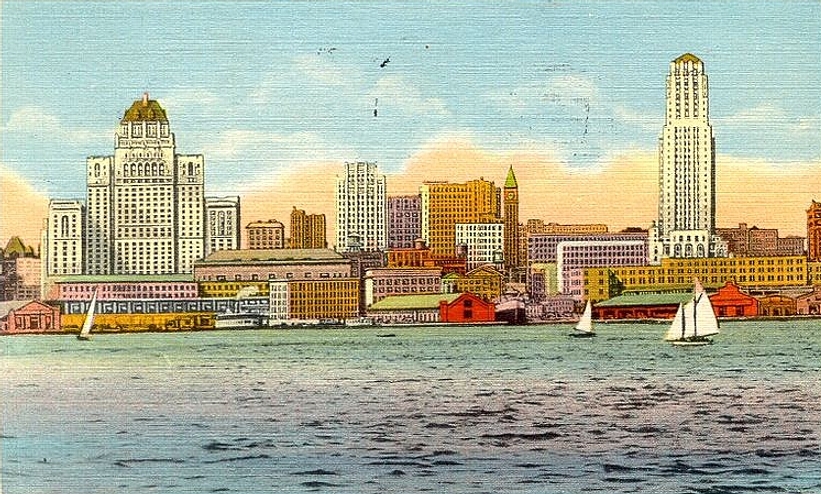The Lost Legacy of a Building that Shaped a city- and a Hero

Many of the historic posts in this blog cover landmarks and buildings that were reinvented and preserved as part of Toronto’s evolving culture. However, this post tells the story of 80 King Street West, a building with historic and cultural significance that was demolished to make way for a new mega-structure: First Canadian Place.
 |
Completed in 1929, 80 King Street West, more commonly known as the Toronto Star Building, and was one of Toronto’s earliest and greatest skyscrapers at the time. Standing at 23 stories tall, it was once a notable feature of Toronto’s skyline. In addition to its grandeur for the time, the building exhibited an Art Deco style that was well appreciated by architectural enthusiasts for its geometric design and ornate stonework. The lower levels of the building acted as the headquarters for the Toronto Star, a newspaper that played a prominent role in the lives of citizens who relied on it as a source of news from around the world. This was an era before modern technology and instant access, making newspapers the primary source of information and the Toronto Star a vital part of the city’s essence.
|
|
In addition to its role in delivering the news, the building is said to have ties to pop culture as the inspiration for the ‘Daily Planet,’ the workplace of Clark Kent, better known by his alter-ego, Superman. Joe Shuster, the co-creator of the infamous superhero, was a newsboy for the Toronto Star (then called The Daily Star) from a young age. It is widely believed that his experiences and fondness for working in downtown Toronto inspired his vision for ‘Metropolis’ and the newspaper office in the Superman stories. Fast forward (faster than a speeding bullet) to the 1970s, when Toronto sought to modernize the skyline. There was a focus on building mega-structures, and sadly, the once-loved Toronto Star Building was overlooked by developers. In 1972, the building was demolished to make way for First Canadian Place, the 72-story building that now soars in its place. |
 |
In modern-day development, there is a growing recognition of the value of preserving buildings with historic and cultural significance. The architecture of the past adds unique character to cities that can often feel bland with endless rows of glass towers. Preserving historic buildings not only brings aesthetic value to the city but also helps carry on the stories, memories, and identities of the communities from which we came.
Although the Star Building that once stood at 80 King Street West did not survive long enough to be given a conservation evaluation, it is fondly remembered by citizens, historians, and architecture enthusiasts alike.
Photographs capture the details of the building that once stood, but it is through historic land surveys that we can gain a deeper understanding of the fabric of the land and the boundaries that defined its place on King Street. By preserving these historic surveys, we can save a piece of history that no longer exists, allowing us to envision the downtown area that once was.

This survey, completed by Speight Van Nostrand in 1958, shows extensive details of the land and serves as a snapshot into the past, illustrating the banks and small brick buildings that surrounded the Star Building. Through these documents, one can envision the downtown core and the layout of the land, which is far different from the appearance of that area today.
References:
• Toronto Star. “A History of Comics at the Toronto Star.” Toronto Star, https://www.thestar.com/news/gta/a-history-of-comics-at-the-toronto-star/article_1e59fe5e-a184-5acb-986e-d2bd2a73f428.html.
• Toronto Public Library Digital Archive. "Old Star Building at 80 King St." https://digitalarchive.tpl.ca/objects/239236/old-star-building-at-80-king-st.
• Architectural Conservancy Ontario. "Building: Toronto Star Building." ACO Toronto, https://www.acotoronto.ca/building.php?ID=948.












